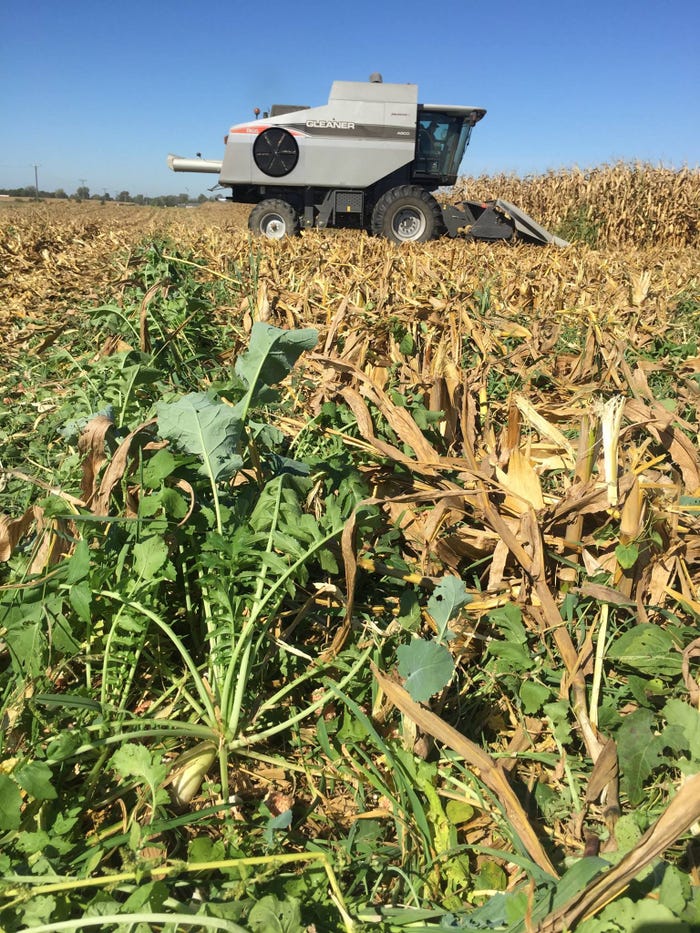August 31, 2017

Think Different
When transitioning to cover crops, go for encouraging diversity while adopting practices that protect beneficials, but do it with a plan in place, says entomologist Jonathan Lundgren.
· Monitor cover crops and production crops alike for pests and beneficials.
· Don't overreact. Seeing a pest in the field doesn't mean you have to kill it! In fact that may be a bad business decision.
· Don't ignore pests found either. Evaluate for economic thresholds, treat with pest specific products if possible and time application for maximum effectiveness in the pest cycle.
· Consider interseeding cover crops with production crops, adds Lundgren, offering the pest an alternative food crop and boosting beneficials.
· Understand pest cycles. Delayed planting may allow overwintering pests to complete their life cycle before emerging plants are at risk.
--------
Cover crops are great for soil health, nutrient sequestration and moisture management. They can also be great havens for insects, as growers who've recently adopted cover crops can attest.
Pests attacking emerging crops are the downside for many early adopters, especially those trying a single species cover crop. "We fought army worms, slugs, wireworms, maggots and more, until we adopted more diverse cover crops," reports David Brandt, a southern Ohio corn, soybean and wheat grower.
Brandt is one of the leading apostles of cover crops, having used them for more than 35 years. For much of that time he planted single species cover crops. Cereal rye would be seeded in fields to be planted to soybeans the next spring and a legume for fields that would be planted to corn. Initially Brandt was aiming to reduce yield-limiting compaction in his no-till fields. Even with no-till, hillside fields suffered from erosion. Cover crops helped with both problems while building soil health.

Diversified cover crop mix
Shift to 2010 when his son Jay and wife Ann got involved in the family's Walnut Creek Seeds business, producing and selling cover crop seeds. The subsequent purchase of a split-row planter made it easy to move to a more diverse cover crop mix. Benefits built quickly, changing how the Brandts farmed while also cutting costs.
"As we have shifted to a more diverse mix of covers, we have seen more beneficials in the fields and fewer pests," David says. "We still have pests, but there aren't enough to damage the crop. In the case of slugs, shifting to a later plant has helped, as have the carabid beetles and lightning bugs that prey on the slugs."
Reduced insecticide use
As a result, they have cut back on insecticides, including neonicotinoids and other treatments. It is a practice that Jonathan Lundgren, PhD, former USDA ARS entomologist, now operating Ecdysis Foundation and Blue Dasher Farm, an independent research farm in South Dakota. He has worked with the Brandts on their insect pest control.
"It is really important to start off with a diverse cover mix and back off on neonicotinoids and other non essential insecticides," says Lundgren. "Doing one or the other alone won't work."

He points to slugs as an example. While the neonicotinoids don't stop slugs, the slugs do absorb the toxin. Then they pass the toxin along to predators, and it kills them. As a result, the predators are not available to control other pests.
"Killing predators with pest management decisions can be problematic," says Lundgren.
"Working with people like Jonathan Lundgren, we've been insecticide and neonicotinoid free on corn and soybeans for several years," says Jay. "When a bird or beneficial insect eats that treated seed, you lose the beneficial. Too many treatments, and you have no beneficials to help manage the pests."
About the Author(s)
You May Also Like




